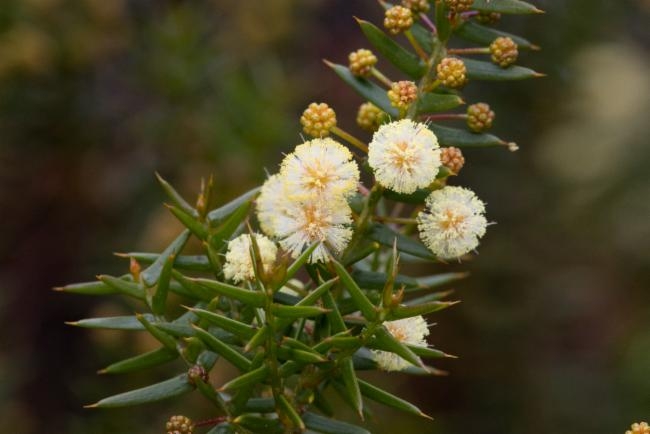Rock Wattle
(Acacia rupicola)
Rock Wattle (Acacia rupicola)
/
/

Kym Nicolson
CC BY 4.0
Image By:
Kym Nicolson
Recorded By:
Copyright:
CC BY 4.0
Copyright Notice:
Photo by: Kym Nicolson | License Type: CC BY 4.0 | License URL: http://creativecommons.org/licenses/by/4.0/ | Occurence ID: https://www.gbif.org/occurrence/1935323250 | Publisher: Atlas of Living Australia |



































Estimated Native Range
Summary
Acacia rupicola, commonly known as Rock Wattle, is an evergreen shrub native to rocky outcrops, dry scrublands, and open woodlands in Southern Australia. It typically grows to a height of 1 to 2.5 meters (3.3 to 8.2 ft) and has a glabrous, diffuse, and somewhat resinous appearance. The Rock Wattle blooms between August and January, with sporadic flowering at other times, producing bright yellow, globular flowers that are attractive to pollinators.
The Rock Wattle is valued for its hardiness, drought tolerance, and ability to attract wildlife, including birds and insects. Its bright yellow flowers add color to the landscape, and its evergreen foliage provides year-round interest. This shrub is often used in parks, reserves, highway verges, batters, and wide median strips, and is recommended as an understorey plant for coastal areas, plains, or foot-slopes. It thrives in dry, full sun or partially shaded locations, especially on rocky terrain. Rock Wattle requires well-drained soils and can be propagated from seed or cuttings. It is known to tolerate moderate frost and is a low-maintenance option for gardeners seeking resilient native plants.CC BY-SA 4.0
The Rock Wattle is valued for its hardiness, drought tolerance, and ability to attract wildlife, including birds and insects. Its bright yellow flowers add color to the landscape, and its evergreen foliage provides year-round interest. This shrub is often used in parks, reserves, highway verges, batters, and wide median strips, and is recommended as an understorey plant for coastal areas, plains, or foot-slopes. It thrives in dry, full sun or partially shaded locations, especially on rocky terrain. Rock Wattle requires well-drained soils and can be propagated from seed or cuttings. It is known to tolerate moderate frost and is a low-maintenance option for gardeners seeking resilient native plants.CC BY-SA 4.0
Plant Description
- Plant Type: Shrub
- Height: 4-7 feet
- Width: 4-7 feet
- Growth Rate: Moderate
- Flower Color: Yellow
- Flowering Season: Spring, Summer
- Leaf Retention: Evergreen
Growth Requirements
- Sun: Full Sun
- Water: Low
- Drainage: Fast
Common Uses
Bee Garden, Bird Garden, Drought Tolerant, Hummingbird Garden, Low Maintenance
Natural Habitat
Native to rocky outcrops, dry scrublands, and open woodlands in Southern Australia
Other Names
Common Names:
Scientific Names: , Acacia rupicola, Racosperma rupicloa, Racosperma rupicola,
GBIF Accepted Name: Acacia rupicola F.Muell. ex Benth.